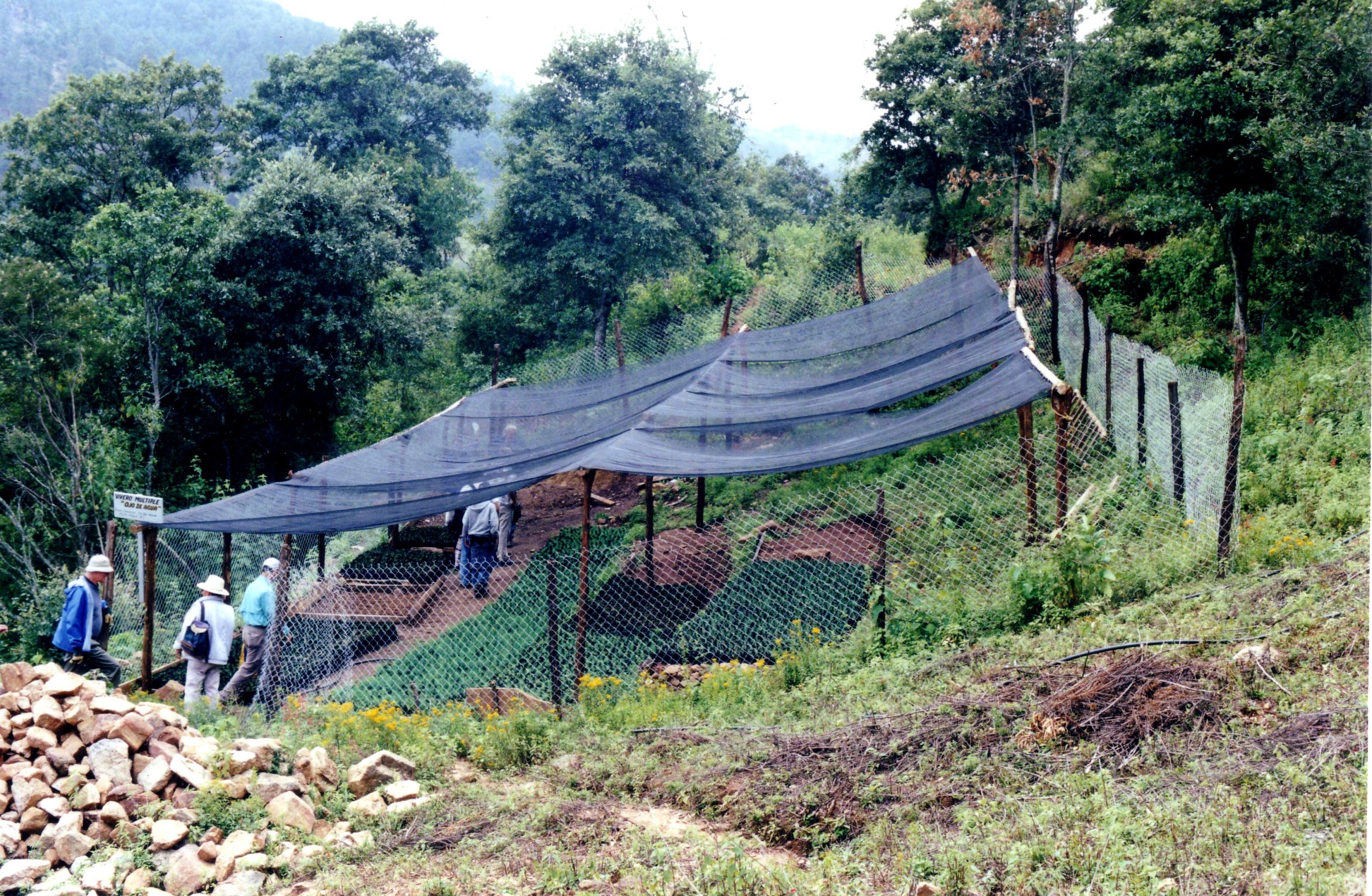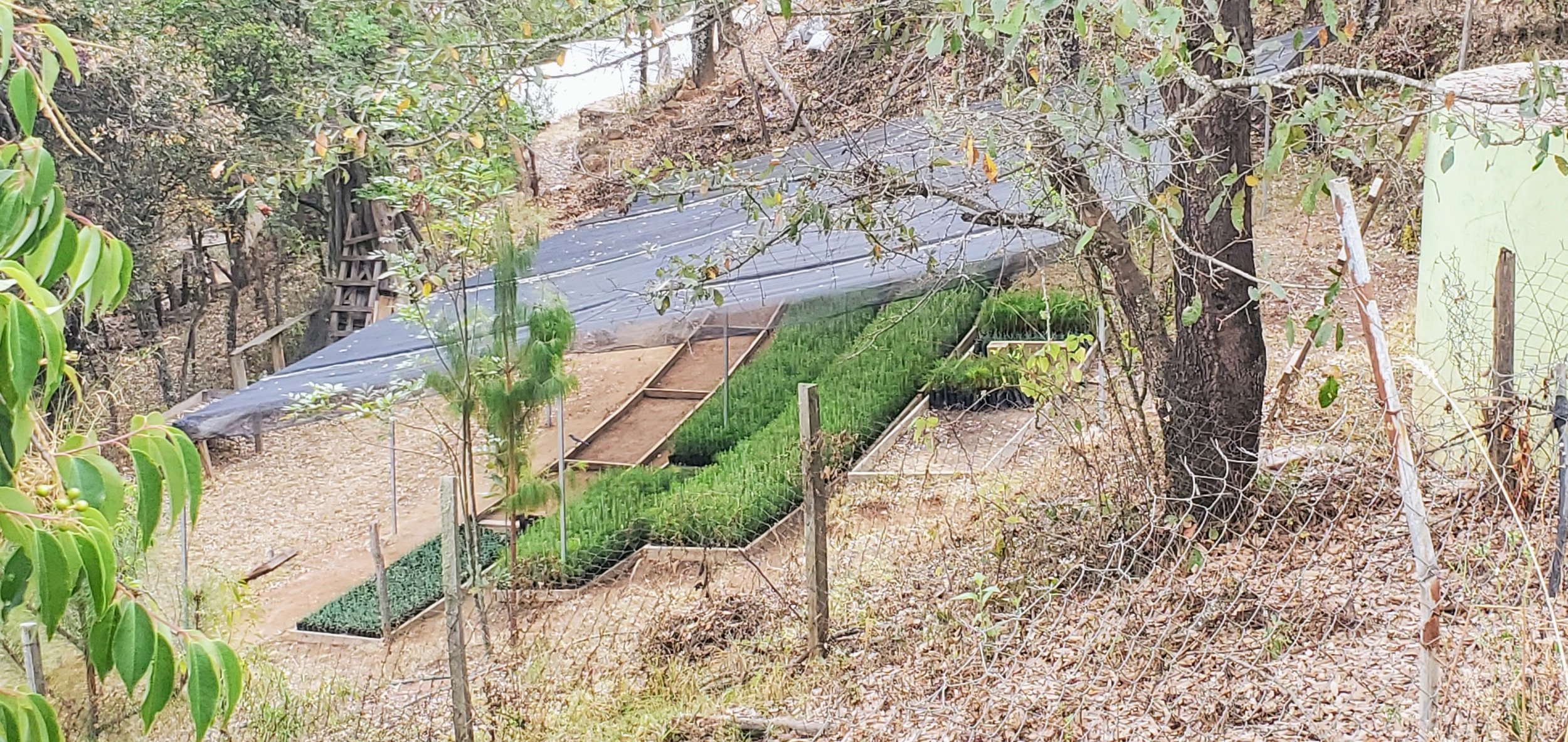A Forest Grows…
Because of the limitations posed by the pandemic and my focus on our work elsewhere, it has been five years since I have visited Mexico, which made my recent trip very emotional, and life-giving.
In 1994, accompanied by our Dominican director, Eldon Garcia, as well as our most influential donors and board members, Don and Doris Adrian, I first visited Oaxaca to begin exploring the idea of expanding our work from the Dominican Republic to Mexico. One of the people I met on that trip was a young professor from the forestry school, Eduardo Lopez. Eduardo would go on to become a key part of the team, right up until the present day. Eduardo and I have had some adventures together over the years, including a terrifying week we spent together in the back of a truck in Nicaragua. Although we both look a little worse for the wear, it was so good to see him this week.
Eduardo has had health issues of late, so he wasn’t able to accompany us to the communities, but everywhere we went we saw his legacy. His former students now make up the front line of our team, and as we visited twenty-year old planting sites, his name was mentioned again and again. When the history of restoration in southern Mexico is written, the name Eduardo Lopez Cortés will have a prominent place. It has been an incredible honor to work with people like him, and to be a small part of facilitating his work.
On that very first trip in 1994, we visited El Oro, a small community in the Mixteca Alta, in the municipality of Santo Domingo Nuxaa, where ultimately we would begin working. I recall sitting with leaders of the community in that first meeting, talking about what Floresta had to offer. I remember the reserve and skepticism of people like Atristain, Tranquilino, and Filadelfo, and I also remember my own hesitancy, realizing that this spot and these people would occupy a significant portion of my time and energy in the years ahead.
El Oro is still there, although so many of those people are gone. Atristain and Tranquilino have passed on, and Filadelfo is just a shadow of himself. But the trees are thriving. When we planted them, it felt like a fool's errand. Fragile pine seedlings were like tiny insurgents, infiltrating a barren empire, somehow expected to terraform these lifeless hillsides.
It seems like only yesterday, this hillside looked like a lost cause.
After hearing Paul’s story of their transformation last year, it was these places that I had come to see. I was not disappointed. The list of changes is extensive, from the natural regeneration of the native oak, to the epiphytes, fungi and other undergrowth that is diversifying the area, to the rich soil and tales of birds and deer returning, and finally the stream reappearing, to flow year round again.
Those seedlings were the perfect metaphor for all of our work, as the tiny and the fragile have amounted to far more than I ever dared hope for.
Furthermore, the planting continues. We visited a tree nursery in Ojo de Agua, where twenty-three years ago, while filling seedling bags, I lay down in the dirt, on my way to becoming the sickest I have ever been. That nursery has long since become a part of the community, under the oversight of three volunteer committee members, appointed by local authorities. There is a new committee each year and we did a quick calculation to realize that nearly seventy people have learned to take care of it, passing that knowledge down to the current caretakers, some of whom were toddlers when the nursery was founded.
El Oro Tree Nursery, 2000 and 2023
There were so many other highlights of this trip.
Reconnecting with Martin Mendoza, who now sits on our board, and with whom we founded Mision Integral in 1999.
Seeing Juan Diaz, a friend who participated in the original baseline study in 1996, now heads up the work in Puebla, and has the most harrowing (and miraculous) covid story I have ever heard.
Hearing the enthusiasm of new participants in Puebla, as they shared about all that they were able to do, once they learned how to work together as a team.
Realizing the care and love with which Milmer has stewarded these precious relationships for all these years.
I always remember my father’s early and dismissive characterization of this work as “planting trees for Jesus.” When I think of all of the life that has been spawned, I believe I could be satisfied with that.



